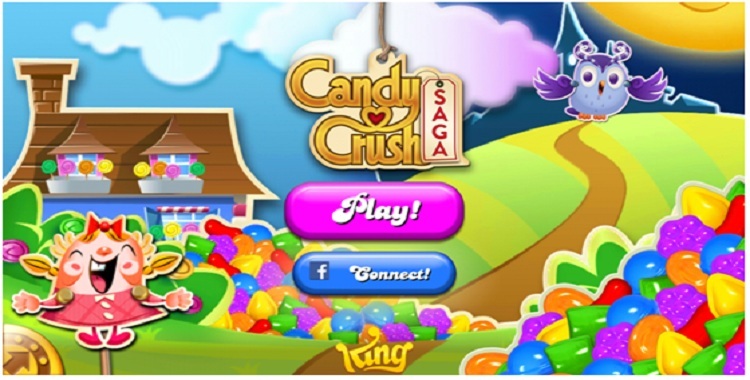Games, especially video games, are some of the last places you can expect to find lessons for your marketing strategy. After all, aren’t they simply for the audience to enjoy?
Candy Crush Saga elicits varying responses and enthusiasm from different people. Enjoying it is an individual experience, and it is not everyone who seems to be on board. Some may view it as annoying - probably you do too - while others enjoy it from time to time. Whatever hate the game gets though, players seem to flock back to it in droves, particularly because Flappy Bird no longer exists in the market. This game (and other related games) can carry various lessons for content marketers everywhere.
The workings of the game
Marketers have utilized gamification - the utilization of game designs in order to unravel and figure out non-game problems - for many years to create strategies for their sharing of content. The game therefore, presents itself as a great way for marketers to share their content in new ways.
The most basic rule about marketing a product or service is keeping it simple. Candy Crush adheres to the rule perfectly - almost everyone knows the rules and how to play the game, even if they have no experience with video games. This is due to the makers using a classic game format, though they added a few elements to make the game look interesting.
The game has visually appealing designs, as it is colorful and has easy booster achievements even at the lower levels. It is not a wonder that many people will come back to it frequently.
Bring in the audience using teaser tactics
Candy Crush is a game that leaves you wanting more of it, all thanks to its ingenious workings. In contrast to many online games, this one does not leave you feeling lost for many hours at a time. For instance, when you run out of your lives, you can wait for at least thirty minutes, unless you want to get back in the game quickly.
The rule of making people want to get more of your product is by making them wait for it, and the game utilizes this perfectly by not giving you more lives immediately. The same principle applies when your moves end - the game asks you if you want to continue playing, and if you want it you have to pay up or wait for some time.
Businesses can follow this principle by recognizing that human beings have a basic need to keep going. This means essentially that you need to make much content for people to stay glued on your brand, and make them want more of it. You can do this in various ways, especially with the advent of social media and blogs that helps you share high quality content. A good example is similar to how rehabs in Recovery Village Arkansas handle information regarding drug abuse, and their easy accessibilty.
Integrating your business with social media
Candy Crush did not start out as a typical video game - it all began on Facebook, which was the major source of its popularity as well. The game emphasizes social media shares in a major way.
For instance, when you pass a level, the game will ask you if you want to share the story with your friends on Facebook. In addition, it gives you a ranking system that shows you where you rank against other players, either from your friend groups or from around the world.
Friends also receive notifications that ask them to share their lives and moves, as well as assisting fellow players to advance to the next levels of the game. Of course, you do not need all this, as it is possible to advance without help, but you may need some dollars along the way.
For any brand, social media interactions are gold, and you should be striving to include them in your content. Platforms such as Instagram provide very good avenues for sharing your visual content, and you can integrate them with other social media platforms. The bottom line is encouraging interaction, and users should have a ways of interacting with your brand and with each other.
Introducing new features to win older players back

Similar to other games, playing Candy Crush can seem like a chore at some point. This can be due to a myriad of reasons, such as getting stuck on certain levels, or the features not being sufficient to make you stay.
Candy Crush is not different from the rest, and you can feel frustrated when playing at a level you cannot get out of. However, recent developments have proven to bring frustrated players back into the game, such as the Booster Wheel that helps players get bonuses wen they spin the wheel, and these bonuses help them advance from levels they feel stuck in. The feature also allows you to spread the good news to your friends who face the same problem.
For a brand, winning back any lost customers is a strategy that is overlooked, unfortunately. However, studies show that winning back ex-customers is easier than trying to convert a new person into your customer - the odds being 20 to 40% of winning back older consumers, compared to 5 to 20% of newer consumers.
The game makers noticed that players were raising complaints that the game was too hard in certain levels. They listened, and made strategies to change some minor aspects of the game, therefore giving a nice solution to the problem.
Harvesting the fruits of marketing
By the end of 2013, 500 million people already had the game in their mobile devices, and the micro-payments system that the game has goes a long way to encourage more players to join in. In fact, revenues from the game are so big that the game has eliminated ads completely - meaning that most revenue originates from the game itself.
Final thoughts
Candy Crush Saga is among the last places you would expect to learn business lessons from, but here we are. Its status as a video game does not discredit the fact that it remains one of the most popular games today, and its success remains a lesson form content marketers everywhere.

